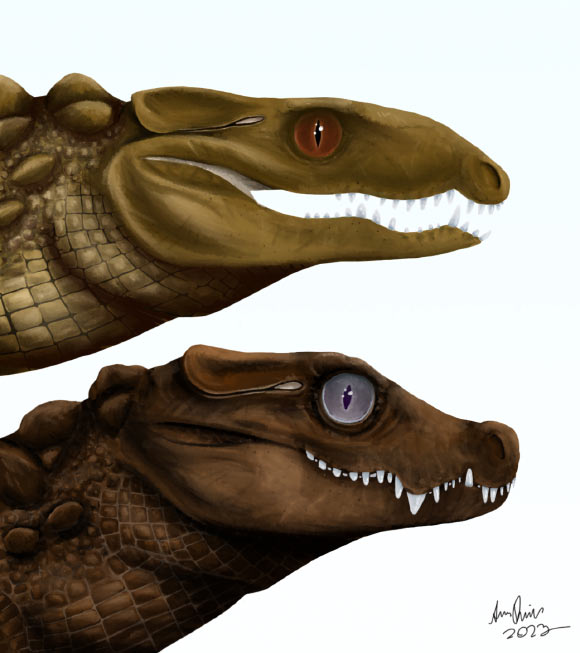Named Wakkaoolithus godthelpi, this eggshell type belonged to mekosuchine crocodiles and represent the oldest crocodilian eggshells ever found in Australia.
The now-extinct mekosuchines (Mekosuchinae) were Australia’s own unique, local branch of the crocodile family.
These creatures dominated inland waters of the continent 55 million years ago (Early Eocene epoch).
They were part of the group of species that includes alligators, true crocodiles, gharials and caiman.
But mekosuchines represent a much older branch than the saltwater and freshwater crocs found in Australia today.
The modern species made their way to the continent much later, as it came into contact with southeast Asia about 5 million years ago.
Unlike today’s crocodiles, mekosuchines filled strange ecological niches.
“It’s a bizarre idea. But some of them appear to have been terrestrial hunters in the forests,” said University of New South Wales Professor Michael Archer.
“There are suggestions of this throughout a wide range of younger mekosuchine fossils that were discovered earlier within 25-million-year-old deposits from another region: the Riversleigh World Heritage Area, Boodjamulla National Park on Waanyi country in northwestern Queensland.”
“Some riverine species there grew to at least 5 m long. Some were also apparently at least partly semi-arboreal ‘drop crocs’.”
“They were perhaps hunting like leopards — dropping out of trees on any unsuspecting thing they fancied for dinner.”
The Wakkaoolithus godthelpi eggshells belong to the oldest known member of the Mekosuchinae clade.
“These eggshells have given us a glimpse of the intimate life history of mekosuchines,” said Dr. Xavier Panadès i Blas, a paleontologist with the El Museu de la Conca Dellà, the Institut Català de Paleontologia Miquel Crusafont and the Universitat Autònoma de Barcelona.
“We can now investigate not only the strange anatomy of these crocs, but also how they reproduced and adapted to changing environments.”
The researchers examined the Wakkaoolithus godthelpi shell fragments under optical and electron microscopes.
Their microstructure suggests the crocs laid eggs on the margins of a lake, with their reproductive strategy adapting to fluctuating conditions.
“Mekosuchine crocs may have lost much of their inland territory because of encroaching dryland — eventually having to compete in the shrinking waterways not only with new arrivals to Australia, but dwindling numbers of their megafaunal-sized prey as well,” said Dr. Michael Stein, a paleontologist at the University of New South Wales.
“The Murgon lake was surrounded by a lush forest, which was also home to the world’s oldest-known songbirds, Australia’s earliest frogs and snakes, a wide range of small mammals with South American links, as well as one of the world’s oldest known bats.”
According to the team, fossil eggshells are an underused resource in vertebrate paleontology.
“They preserve microstructural and geochemical signals that tell us not only what kinds of animals laid them, but also where they nested and how they bred,” Dr. Panadès i Blas said.
“Our study shows just how powerful these fragments can be.”
“Eggshells should be a routine, standard component of paleontological research — collected, curated and analyzed alongside bones and teeth.”
The findings were published this week in the Journal of Vertebrate Paleontology.
_____
Xavier Panadès I Blas et al. Australia’s oldest crocodylian eggshell: insights into the reproductive paleoecology of mekosuchines. Journal of Vertebrate Paleontology, published online November 11, 2025; doi: 10.1080/02724634.2025.2560010








